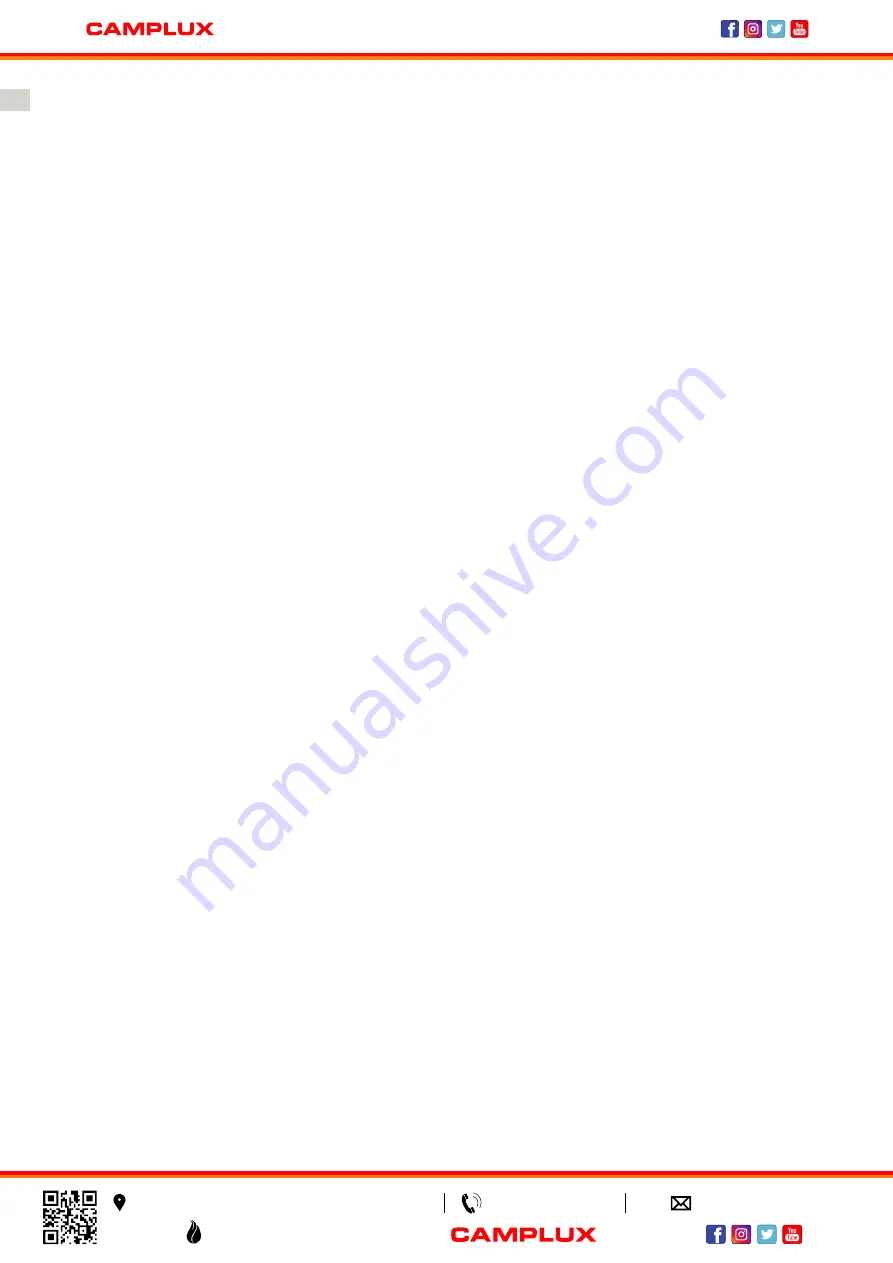
Leak Test
1.
DO NOT USE OR PERMIT SOURCES OF IGNITION IN THE AREA WHILE DOING THE LEAK TEST. THIS
INCLUDES SMOKING.
2. Leak testing should be done once per year or when the LP-gas cylinder or any other gas system part is
replaced, which is more frequent.
3. The leak testing solution should be half liquid detergent and half water.
4. Apply the solution to the LP-gas delivery system as points shown in the illustration.
5. Bubbles in the soap solution indicate that a leak exists.
6. The leak(s) must be stopped by tightening the loose joints, or by replacing the faulty part(s) with the part(s)
recommended by the appliance manufacturer if possible.
The Appliance Is Not To Be Used Until Any Leak Is Corrected
A gas appliance repairman or LP-gas dealer should be called if attempts to stop the leak(s) are unsuccessful and,
in such case, the LP-gas supply must be shut off at the cylinder valve or the cylinder must be removed from the
appliance until the leak(s) is corrected.
Inspect hose prior to each use of the unit. If there is evidence of excessive abrasion or wear, or if the hose is
damaged, the hose assembly must be replaced before the appliance being put into operation.
Inspect burner prior to each use. If there is evidence of damage, the burner must be replaced before the appliance
being put into operation.
Should any part of this appliance ( including the burner) become soiled or dirty, wipe lightly with a damp cloth. Do
not use flammable or corrosive cleaning products on or near this unit.
Ensure that the gas hose is placed in an area where it is unlikely to be tripped over (such as pathways or trails) or
be subject to other accidental damage.
Keep the appliance area clean and free from combustible materials, gasoline and other flammable vapors and
liquids.
Solid fuels shall not be burned in this appliance.
Installation must conform with local codes or, in the absence of local codes, with either the National Fuel Gas Code
ANSI Z223. 1/NFPA 54, Natural Gas and Propane Installation Code, CSA B149. 1 or Propane Storage and
Handling Code, B149.2, or the Standard for Recreational Vehicles, ANSI A 119.2/NFPA 1192, and CSA Z240 RV
Series, Recreational Vehicle Code, as applicable.
Note to Installer: Leave this guide with the consumer.
Note to consumer: Please retain this guide for future use.
Section 1: Assembly
1. Open the bag containing smaller rocks and arrange rocks in burner area. Our preferred configuration is pictured
below. Never handle rocks which have not been allowed to cool down from exposure to flame. Never attempt to
rearrange rocks while unit is ignited (Fig.1).
(Note: Rocks are not to exceed a maximum weight of 5 kg or 11 lb.)
(Include 1 x lava rocks 8.4 lbs)
2. Attach small end of included hose to valve on fire pit by hand. Use a small wrench to tighten. Be careful not to
over tighten, as this can deform the brass fitting (Fig.2).
5
Visit Us: Camplux.com
3330-A Marathon Ct Charleston, SC 29418
1(844) 538-7475
www.camplux.com






































